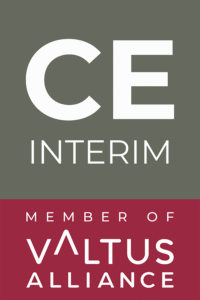Nemáte dost času na přečtení celého článku? Poslechněte si shrnutí ve 2 minutách.
Zvládnutí složitého procesu integrace po fúzi (PMI) vyžaduje pečlivé plánování, strategické provedení a účinné postupy řízení, které zajistí hladký přechod a maximalizaci synergií. Zavedení osvědčených postupů integrace po fúzi může významně zvýšit úspěšnost integračního procesu, zatímco pochopení příslušných rolí a odpovědností je zásadní pro udržení pořádku a odpovědnosti.
Osvědčené postupy integrace po fúzi
1) Účinné strategie krizové komunikace
Jasná a včasná komunikace je během fúze nebo akvizice nejdůležitější pro řešení nejasností, zmírnění obav a udržení morálky zaměstnanců a důvěry zainteresovaných stran. Mezi osvědčené postupy patří:
- Proaktivní komunikace: Vytvoření komunikačního plánu, který stanoví klíčová sdělení, kanály a časové plány pro sdílení informací se zaměstnanci, zákazníky a dalšími zúčastněnými stranami.
- Transparentnost a jasnost: Poskytování upřímných a transparentních informací o pokroku v integraci, problémech a očekávaných výsledcích s cílem vybudovat důvěru a zmírnit fámy.
- Obousměrná komunikace: Podporovat otevřený dialog, zpětnou vazbu a dotazy zúčastněných stran, aby se rychle řešily problémy a vytvářelo se podpůrné prostředí.
2) Využití poradenských služeb v oblasti dočasného řízení
Konzultanti pro dočasné řízení hrají klíčovou roli při usnadňování úspěšných PMI tím, že přinášejí specializované odborné znalosti, vedení a provozní poradenství. Mezi osvědčené postupy patří:
- Strategické vedení: Zapojení dočasných manažerů pro zajištění strategického dohledu, řízení změn a sladění integračních snah s obchodními cíli.
- Provozní excelence: Využití zkušeností interim manažerů k optimalizaci procesů, zefektivnění provozu a identifikaci efektivity během integrační fáze.
- Kulturní integrace: Podpora iniciativ na sjednocení kultury a podpora jednotné organizační kultury prostřednictvím efektivního vedení a komunikace.
Kontrolní seznam pro integraci po fúzi
1) Základní úkoly a činnosti pro integraci
a) Plánování před spojením
- Sladění cílů a úkolů slučovaných subjektů: Definovat strategické a provozní priority pro spojenou organizaci. Určete krátkodobé a dlouhodobé cíle, kterými se bude řídit integrační úsilí. Příklad: Pokud technologická společnost získá softwarový startup, je klíčové sladit časové plány integrace produktů a cíle udržení zákazníků.
- Proveďte důkladnou prověrku: Posoudit finanční, právní, provozní a kulturní aspekty obou společností. Identifikujte potenciální synergie a rizika, která by mohla ovlivnit integraci. Příklad: Příklad: Během due diligence může zjištění nesouladu v kompatibilitě IT infrastruktury podnítit včasné plánování problémů při integraci systémů.
- Identifikace klíčových zúčastněných stran a integračních týmů: Vytvořit úřad pro řízení integrace (IMO) složený ze zástupců obou společností. Přidělte integračním týmům jasné role a odpovědnosti napříč funkčními oblastmi (IT, HR, finance atd.). Příklad: Jmenování specializovaného týmu, který se bude zabývat kulturní integrací, zajistí, že budou účinně řešeny obavy a očekávání zaměstnanců.
b) Kulturní integrace
- Posouzení a plánování kulturní integrace: Zhodnoťte kulturní rozdíly a podobnosti mezi fúzujícími subjekty. Vypracujte strategie pro míchání firemních kultur při zachování základních hodnot. Příklad: Provedení průzkumů mezi zaměstnanci a ohniskových skupin může poskytnout poznatky o kulturních nuancích, které ovlivňují dynamiku na pracovišti.
c) Právní záležitosti a dodržování předpisů
- Zajištění schvalování a dodržování předpisů: Získání potřebných povolení a licencí od regulačních orgánů pro sloučený subjekt. Zajistěte dodržování místních, národních a mezinárodních zákonů a předpisů. Příklad: Najmutí právních expertů pro kontrolu smluv a identifikaci regulačních požadavků zajišťuje právní kontinuitu a minimalizuje rizika související s dodržováním předpisů.
- Integrace právních struktur a ochrana duševního vlastnictví: Konsolidace právních subjektů a práv duševního vlastnictví (IPR). Vypracujte nové dohody nebo změňte stávající dohody tak, aby odrážely změny ve vlastnictví a odpovědnosti. Příklad: Aktualizace registrací ochranných známek a patentových přihlášek tak, aby odrážely novou identitu značky a nabídku produktů sloučeného subjektu.
d) Finanční integrace
- Konsolidace finančních operací a systémů: Integrace systémů finančního výkaznictví a účetních postupů. Zjednodušit procesy sestavování rozpočtu, prognózování a finanční analýzy. Příklad: Zavedení jednotného systému ERP umožňuje finanční výkaznictví v reálném čase a usnadňuje mezioborovou spolupráci při přidělování rozpočtu.
- Plán realizace synergie: Identifikace synergií v oblasti úspor nákladů, růstu příjmů a provozní efektivity. Vypracujte strategie pro zachycení a měření synergií po integraci. Příklad: Spojení prodejních týmů za účelem křížového prodeje produktů a služeb širší zákaznické základně, a tím zvýšení penetrace trhu a příjmů.
e) Provozní integrace
- Sloučení dodavatelského řetězce a provozních procesů: Sladění procesů nákupu, výroby a distribuce. Optimalizujte logistiku dodavatelského řetězce s cílem snížit náklady a zlepšit úroveň služeb. Příklad: Konsolidace skladových zařízení a nové projednání smluv s dodavateli s cílem využít úspor z rozsahu a snížit náklady na nákup.
- Integrace zásad a systémů lidských zdrojů: Harmonizovat zaměstnanecké výhody, mzdové systémy a postupy řízení výkonnosti. Podporovat jednotnou firemní kulturu prostřednictvím iniciativ v oblasti lidských zdrojů a programů rozvoje vedoucích pracovníků. Příklad: Standardizace procesů přijímání zaměstnanců a kritérií hodnocení výkonnosti s cílem podpořit konzistentnost a spravedlnost v rámci sloučeného subjektu.
f) Strategie a umístění na trhu
- Sladění tržních strategií sloučeného subjektu: Definovat cílové trhy, segmenty zákazníků a strategie konkurenčního umístění. Vypracování marketingových a prodejních strategií s cílem využít kombinovaných silných stránek. Příklad: Provádění průzkumu trhu za účelem zjištění preferencí zákazníků a tržních trendů, které ovlivňují vývoj produktů a prodejní strategie.
- Racionalizace portfolia produktů/služeb: Vyhodnocení nabídky produktů/služeb s cílem odstranit duplicity a optimalizovat portfolio. Sladit strategie vývoje produktů a inovací s poptávkou na trhu a očekáváním zákazníků. Příklad: Postupné vyřazování produktů s nízkou marží a investování zdrojů do vývoje inovativních řešení, která reagují na nové potřeby trhu.
g) Řízení zákazníků a zainteresovaných stran
- Zachování kontinuity služeb zákazníkům: Zajištění nepřetržitého poskytování služeb a zákaznické podpory. Rychle řešit dotazy a připomínky zákazníků a udržovat jejich spokojenost. Příklad: Zavedení horké linky zákaznického servisu a portálu online podpory, který zákazníkům pomáhá s dotazy a řešením problémů.
- Zapojení zúčastněných stran do procesu integrace: Podporovat spolupráci a partnerství s klíčovými zúčastněnými stranami (investory, dodavateli, vedoucími představiteli komunity atd.). Usilujte o vstupy a zapojení do rozhodovacích procesů s cílem budovat důvěru a soulad. Příklad: Pořádání summitů dodavatelů a setkání s investory za účelem projednání možností partnerství a strategických iniciativ po fúzi.
2) Sledování a hodnocení pokroku
a) Nastavení klíčových ukazatelů výkonnosti pro úspěšnou integraci
- Definujte klíčové ukazatele výkonnosti (KPI): V souladu s integračními cíli a záměry stanovte měřítka pro měření pokroku a úspěchu ve všech funkčních oblastech. Příklad: Sledování klíčových ukazatelů výkonnosti, jako je míra udržení zákazníků, výsledky spokojenosti zaměstnanců a finanční ukazatele výkonnosti, aby bylo možné posoudit efektivitu integrace.
b) Pravidelné sledování pokroku v integraci
- Provádění pravidelných hodnocení a přezkumů stavu: Sledování milníků, časových plánů a dodržování rozpočtu s cílem identifikovat potenciální rizika a odchylky. Příklad: Pořádání dvoutýdenních schůzek o stavu integrace s vedoucími oddělení s cílem posoudit pokrok, řešit problémy a podle potřeby upravit časové plány.
c) Úprava integračních plánů na základě zpětné vazby
- Získání zpětné vazby od zúčastněných stran a integračních týmů: Provádění nápravných opatření a úprav integračních plánů na základě zpětné vazby a získaných zkušeností. Příklad: Provádění postmortálních přezkumů po dokončení hlavních fází integrace s cílem získat poznatky a zlepšit budoucí integrační strategie.
Role a odpovědnosti při integraci po fúzi
1) Klíčoví hráči v řízení integrace po fúzi
- Výkonný vedoucí tým: Vrcholní manažeři, včetně GENERÁLNÍ ŘEDITEL, FINANČNÍ ŘEDITELa PROVOZNÍ ŘEDITEL, hrají zásadní roli při stanovování vize a strategického směřování integrace. Zajišťují soulad s celkovou podnikovou strategií a nesou odpovědnost za úspěch integrace.
- Úřad pro řízení integrace (IMO): Tento tým dohlíží na celý proces integrace a koordinuje úsilí různých oddělení. IMO zajišťuje, aby integrační činnosti probíhaly podle plánu a byly v souladu se strategickými cíli.
- Funkční vedoucí pracovníci: Vedoucí pracovníci klíčových funkcí, jako jsou finance, lidské zdroje, IT a provoz, jsou zodpovědní za integraci svých oblastí. Vypracovávají a provádějí podrobné integrační plány, zajišťují hladký přechod a minimalizují narušení.
2) Povinnosti dočasných manažerů a vedoucích pracovníků
- Dočasní manažeři: Interim manažeři, zejména z firem jako CE Interim, přináší specializované odborné znalosti v oblasti řízení složitých integrací. Mohou zastávat výkonné funkce, jako je ředitel pro integraci nebo ředitel pro řízení programů, a zajišťovat vedení a řízení během přechodného období.
- Vedoucí pracovníci: Stávající vedoucí pracovníci musí spolupracovat s dočasnými manažery, aby byla zajištěna kontinuita a využita jejich hluboká znalost společnosti. Jsou zodpovědní za udržení každodenního provozu a zároveň podporují proces integrace.
Poradenství v oblasti integrace po fúzi
1) Význam poradních sborů a konzultantů
- Poradní sbory: Poradní sbory složené z odborníků a zkušených profesionálů poskytují strategické vedení a objektivní pohled na věc. Pomáhají se orientovat ve složitých integračních výzvách a poskytují rady ohledně osvědčených postupů a možných úskalí.
- Konzultanti: Externí konzultanti přinášejí do procesu integrace specializované dovednosti a zkušenosti. Nabízejí důležitou podporu v oblastech, jako je řízení změn, kulturní integrace a provozní optimalizace.
2) Podpora z globálního fondu talentů společnosti CE Interim
CE Interim nabízí globální síť zkušených interim manažerů a konzultantů, kteří poskytují neocenitelnou podporu při integraci po fúzi. Tito odborníci přinášejí bohaté zkušenosti z různých průmyslových odvětví a zeměpisných oblastí a pomáhají zajistit bezproblémový proces integrace. Pomáhají v oblastech, jako jsou:
- Strategické plánování: Vypracování komplexních integračních plánů v souladu s obchodními cíli.
- Provozní provedení: Provádění integračních činností napříč funkcemi a zajišťování koordinace.
- Řízení rizik: Identifikace a zmírnění potenciálních rizik během procesu integrace.
- Řízení změn: Usnadnění kulturní integrace a řešení problémů zaměstnanců.
Využitím globální skupiny talentů společnosti CE Interim mohou společnosti získat přístup k odborným znalostem potřebným k tomu, aby se vypořádaly se složitostí integrace po fúzi a dosáhly dlouhodobého úspěchu.
Závěr
Pro úspěch integrace po fúzi jsou nezbytné osvědčené postupy a jasně vymezené role a odpovědnosti. Zavedení účinných strategií krizové komunikace, využití poradenských služeb interim managementu a dodržování komplexního kontrolního seznamu pro integraci může proces integrace výrazně zlepšit.
Pochopení klíčových hráčů a jejich odpovědnosti, spolu s podporou ze strany poradní sbory a konzultanty, dále zajišťuje hladký a úspěšný přechod, který v konečném důsledku vede k dlouhodobému růstu a stabilitě sloučeného subjektu.





